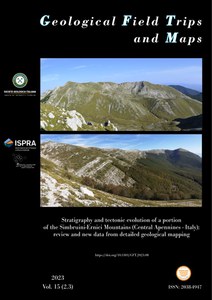Stratigraphy and tectonic evolution of a portion of the Simbruini-Ernici Mountains (Central Apennines - Italy): review and new data from detailed geological mapping
We describe a portion of the Simbruini-Ernici Mountains, that is going to be included in the Sheet 377 "Trasacco" of the Geological Map of Italy at 1:50,000 scale. The study area is characterized by tectono-stratigraphic peculiar features, such as the occurrence of a narrow pelagic intra-platform basin linked to the E-Jurassic rifting of W-Tethys, filled by the progradation of the carbonate platform margins. Since the rest of the Mesozoic, and in the Miocene, this portion of the Apennine platform persisted in a carbonate platform setting. Early Cretaceous synsedimentary tectonics is recorded by the Berriasian-Aptian units. Cenomanian to Campanian rudist- dominated associations developed in inner platform settings. After the "Palaeogene hiatus" carbonate sedimentation was resumed in the Early Miocene but ended in the Tortonian when chain building started. Throughout the Messinian and Pliocene wedge-top basins formed, filled by thick clastic polygenic deposits. Since the Late Pliocene, the uplift of the chain caused subaerial exposure and erosion. This phase is responsible of the deposition of Quaternary clastics, which have been organised for the first time as stratigraphic units. The wide array of continental deposits of the study area records several erosional/depositional cycles, controlled by the combined tectonics and climatic oscillations.
DOI: https://doi.org/10.3301/GFT.2023.08

